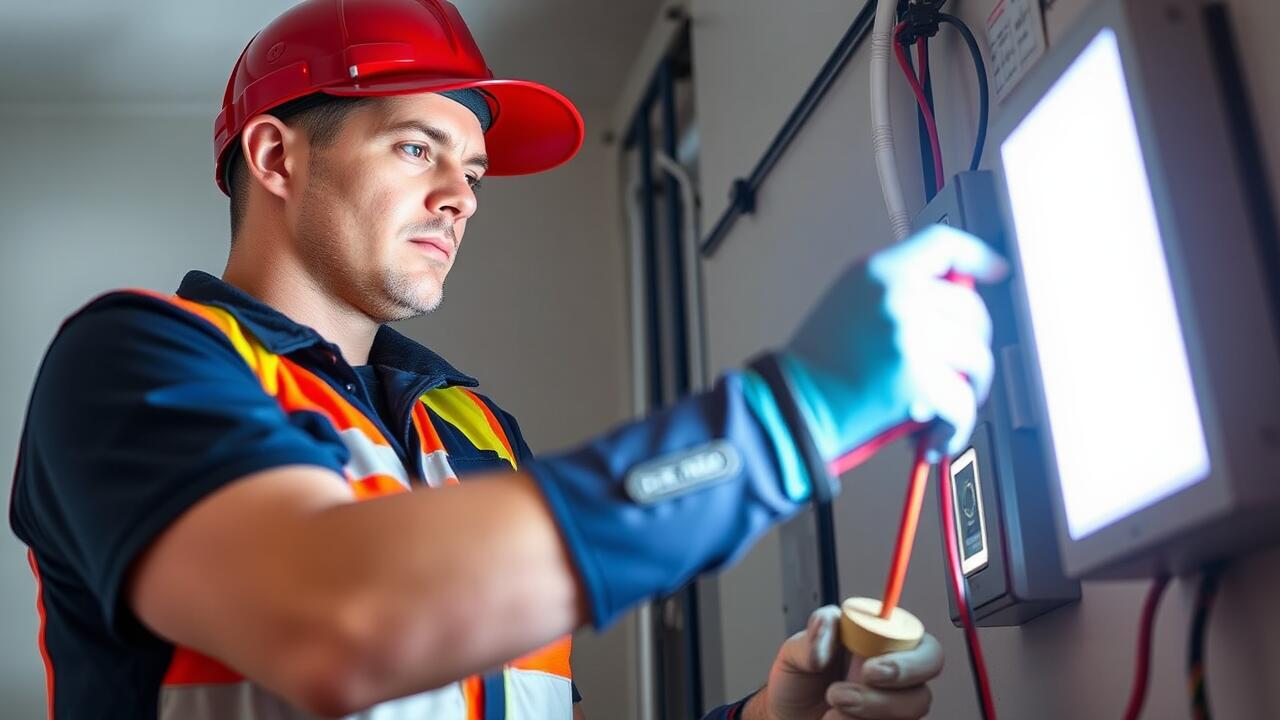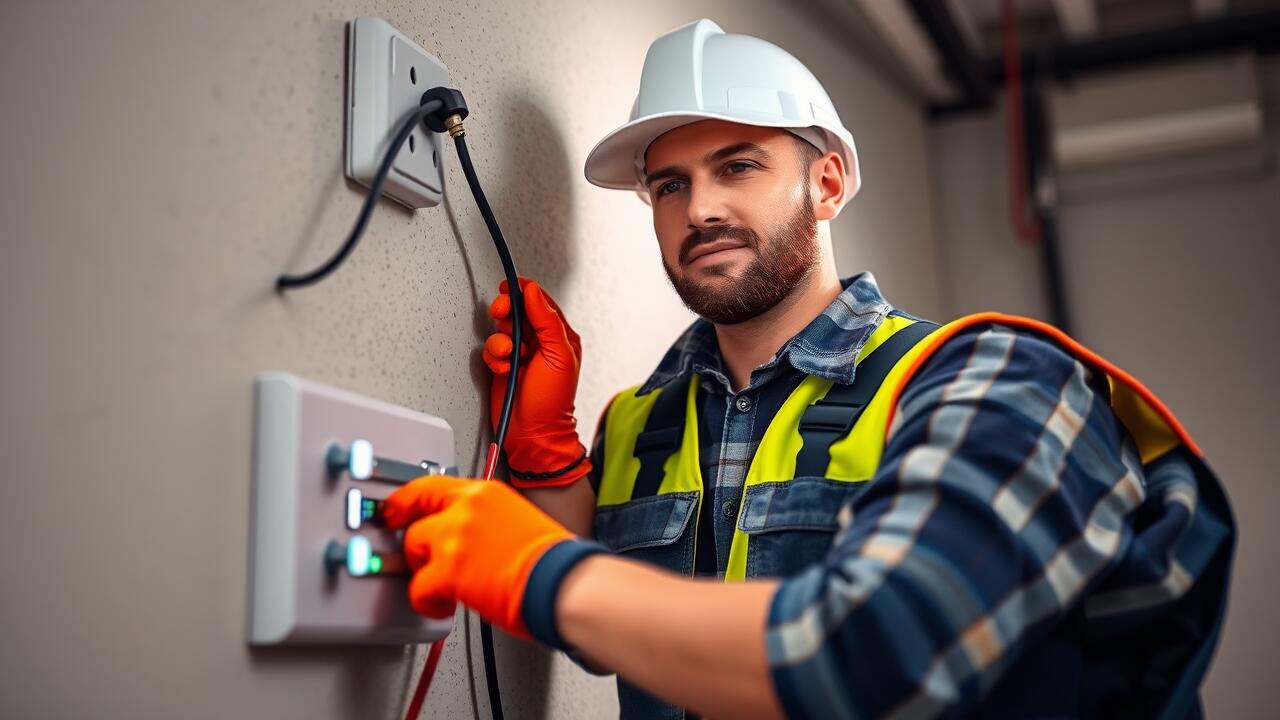
Reporting the Incident
When an electrical incident occurs, immediate reporting is crucial. Individuals present should alert their supervisor or designated safety personnel as soon as possible. This notification ensures that proper procedures can be activated swiftly. Details surrounding the incident should be communicated clearly, including any risks posed to personnel and the environment. Prompt reporting not only safeguards those directly involved but also facilitates a faster response from professional services like an Emergency Electrician near me.
All relevant information must be documented meticulously. This includes the time of the incident, persons involved, and the specific nature of the electrical failure. Accurate records will aid in subsequent investigations and possibly mitigate future incidents. In situations where the electrical hazard persists, ensuring that an Emergency Electrician near me is contacted for immediate assistance is essential in maintaining safety and preventing further complications.
Documenting Relevant Details
When an electrical incident occurs, meticulous documentation of all relevant details is crucial. This includes the time of the incident, location, and a comprehensive description of what transpired. Gathering witness statements can provide additional context. Each document or record should be dated and signed to ensure authenticity. If professional help is being sought, including the contact details of an "Emergency Electrician near me" can expedite the response and resolution process.
Maintaining a clear and organized record helps in further investigations and can be vital for insurance claims or workplace assessments. Capturing information about the equipment involved, any warning signs noticed before the incident, and the actions taken immediately after can be significant. Proper documentation not only aids in addressing the current situation but also provides a reference for preventing future incidents.
Conducting a Safety Inspection
Safety inspections following an electrical incident are critical in identifying potential hazards and ensuring the area is safe for re-entry. Qualified personnel should systematically evaluate the affected site. Checking for visible damage to circuits, wiring, and appliances is essential. Tools like multimeters can assist in assessing the functionality of electrical systems. If significant risks are identified, it may be necessary to halt operations until repairs are completed.
In situations where immediate resolution is required, seeking assistance from an “Emergency Electrician near me” can provide expert guidance and repair services. This professional can conduct an in-depth inspection and help restore safe electrical operations. Their training equips them to identify issues that may not be immediately visible, ensuring a comprehensive safety evaluation is performed.
Evaluating Electrical Equipment
Evaluating electrical equipment after an incident requires a thorough assessment to ensure safety and functionality. Inspectors should closely examine all involved components for visible damage, signs of overheating, or wear and tear. Any equipment that poses a risk should be tagged and removed from service until repairs or replacements are completed. Identifying potential hazards helps prevent future accidents and ensures a secure working environment.
In some cases, seeking professional assistance is necessary for a complete evaluation. Hiring an Emergency Electrician near me can provide specialized knowledge and expertise. These professionals are trained to conduct detailed inspections, offering insights on necessary repairs or upgrades. Engaging with an electrician who understands local codes and safety regulations enhances the reliability of the findings and supports a safer operational environment.
Investigating the Cause
Investigating the cause of an electrical incident involves a systematic approach to identify what went wrong. Collecting evidence is crucial. This includes assessing conditions leading up to the incident, analyzing any equipment failures, and reviewing maintenance records. Witness interviews can provide additional insights, shedding light on any unusual behaviors or activities before the event occurred. Ensuring a thorough documentation process will aid in understanding the circumstances involved.
When analyzing the equipment itself, a careful evaluation can reveal potential faults or hazards. Inspecting for signs of wear and tear, corrosion, or issues with connections is essential. Consulting with an "Emergency Electrician near me" can provide expert insights during this phase. They have the experience necessary to pinpoint irregularities that might not be immediately obvious. Taking the time to investigate thoroughly will help establish a clearer picture of the incident and inform future safety measures.
Root Cause Analysis Techniques
Understanding the root causes of electrical incidents is essential for preventing future occurrences. Techniques such as the “5 Whys” method can help teams dig deeper into the problem by asking why an incident happened repeatedly until the underlying cause is identified. Fishbone diagrams, also known as Ishikawa diagrams, are valuable for visually mapping out potential causes of an issue, categorizing them into major groups. These methods foster team collaboration and ensure a thorough analysis of every contributing factor to the incident.
In addition to traditional methods, utilizing software tools can streamline the analysis process. These tools often enable the integration of data from various sources, offering insights and identifying patterns that may not be immediately evident. When working through these analyses, it’s crucial to document findings thoroughly, especially if it leads to the decision to call for an "Emergency Electrician near me." This ensures that all aspects of the incident are addressed comprehensively, enhancing safety protocols for the future.
FAQS
What should I do immediately after witnessing an electrical incident?
Ensure your safety first by moving away from the area and avoiding contact with any electrical equipment. Call emergency services and report the incident as soon as it is safe to do so.
How do I report an electrical incident?
Report the incident to your supervisor or designated safety officer. Provide them with all relevant details, including the time, location, and nature of the incident, as well as any injuries or damage incurred.
What details should I document after an electrical incident?
Document the time and date of the incident, the location, the individuals involved, any witnesses, the type of electrical equipment affected, and a description of the incident. Photographic evidence can also be helpful.
What steps are involved in conducting a safety inspection after an electrical incident?
Conduct a thorough safety inspection of the area and affected equipment. Check for visible damage, signs of overheating, or any hazardous conditions. Ensure that the area is safe before allowing anyone to return.
What is root cause analysis and why is it important after an electrical incident?
Root cause analysis is a systematic process for identifying the underlying causes of an incident to prevent recurrence. It is important because it helps organizations understand what went wrong and implement corrective measures to enhance safety.



